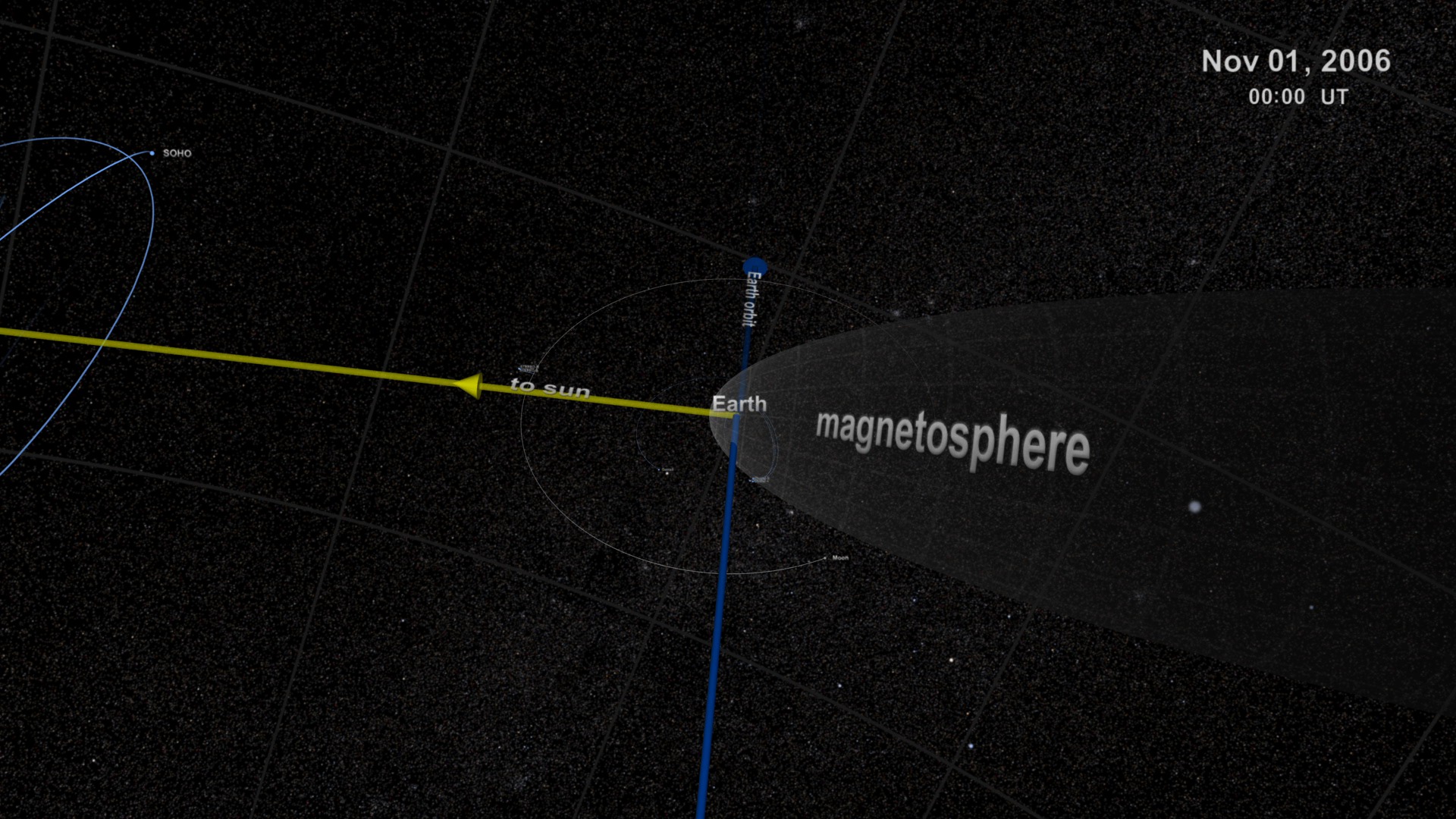Sentinels Of The Heliosphere
Space around Earth is anything but a barren vacuum. The area seethes with constantly changing electric and magnetic fields. Charged particles move energy around, create electric currents, produce the aurora, and sometimes even damage technology in space. Many of these particles stream in from the solar wind and travel 93 million miles from the surface of the sun. Other areas are dominated by particles of a more local source: Earth's atmosphere. This entire electromagnetic environment, from the sun to the edges of the solar system, is known as the heliosphere. As illustrated in the visualization below, a fleet of NASA spacecraft—some orbiting tightly around Earth, some closer to the sun, and two almost to the edge of the solar system—try to understand this complex, dynamic system. Using all of these resources together, researchers will learn how to predict changes in space weather and protect spacecraft and astronauts from this harsh environment.

NASA's heliophysics fleet of more than 20 spacecraft studies the dynamic electromagnetic system stretching from the sun to Earth.
A host of spacecraft travel in orbits around Earth and beyond to study the region known as the heliosphere.

The THEMIS, Cluster and Geotail spacecraft follow larger elliptical orbits to study how the sun's energy affects the magnetosphere.

Parked beyond the magnetosphere, orbiting around Lagrange points, spacecraft observe the sun without interference from Earth's atmosphere.

Complex orbital mechanics put spacecraft in orbit well beyond Earth; STEREO used the moon's gravity to reach its solar orbit (at 2:55 in movie).

Voyager 1 and 2 used gravity assists from planets on their three-decade journey (path marked by blue lines) to the edges of the heliosphere.
Credits
Please give credit for this item to:
NASA's Goddard Space Flight Center
-
Animators
- Greg Shirah (NASA/GSFC)
- Ernie Wright (USRA)
- Tom Bridgman (Global Science and Technology, Inc.)
- Horace Mitchell (NASA/GSFC)
- Trent L. Schindler (USRA)
- Cindy Starr (Global Science and Technology, Inc.)
-
Video editor
- Stuart A. Snodgrass (HTSI)
-
Narrator
- Michael Starobin (HTSI)
-
Producer
- Rani Gran (NASA/GSFC)
-
Scientists
- Jennifer Rumburg (NASA/OSC)
- Jeffrey Hayes (NASA/HQ)
-
Writer
- Karen Fox (ADNET Systems, Inc.)
Release date
This page was originally published on Tuesday, November 22, 2011.
This page was last updated on Wednesday, May 3, 2023 at 1:53 PM EDT.
